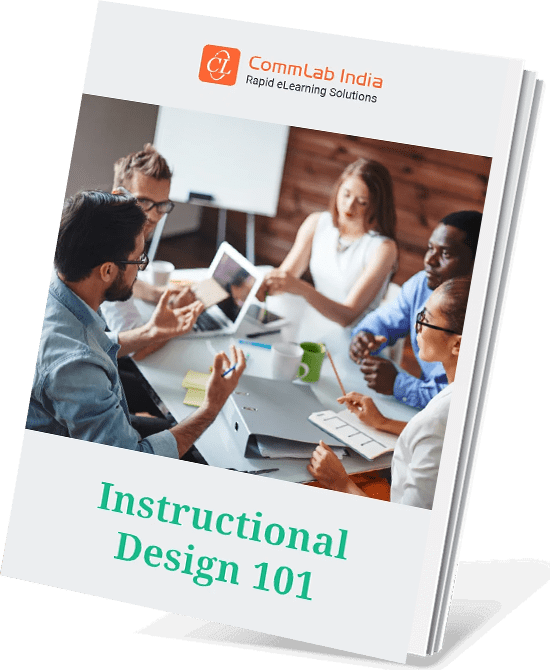All About Quiet Quitting [The Concept + Causes + Prevention + 3 Instructional Design Strategies to Rescue]
![All About Quiet Quitting [The Concept + Causes + Prevention + 3 Instructional Design Strategies to Rescue] All About Quiet Quitting [The Concept + Causes + Prevention + 3 Instructional Design Strategies to Rescue]](https://blog.commlabindia.com/hubfs/Imported_Blog_Media/All-About-Quiet-Quitting-The-Concept-Causes-Prevention-3-Instructional-Design-Strategies-to-Rescue.jpg)
“Excellence is not a skill, it’s an attitude.”
– Ralph Marston
This quote suggests that going above and beyond is not just about having a particular skill or talent, but it’s more about the mindset and attitude that you bring to your work. It’s about striving for excellence in everything you do, even if it means going beyond what is expected or required of you. This attitude can help you stand out and achieve great success in your personal and professional life.
But sadly, in today’s fast-paced world of corporate, employees no longer hold onto this quote. Rather, they have adopted a laid-back attitude at the workplace and for their job role, which is now popularly known as “QUIET QUITTING”!!
Is your organization facing something similar too?
Well, it’s high time that you take action!
No More Fear of Quiet Quitting!
Here are the top 3 instructional design strategies to boost your confidence:
- Microlearning
- Gamification
- Storytelling
To help you get the basics right so that you can focus on taking effective measures, I’ll walk you through the concept of quiet quitting, its causes, and finally how you can prevent it. So let’s begin!
What is Quiet Quitting?
Have you ever heard of “quiet quitting” before? Well, it’s a phenomenon that’s becoming increasingly common in the workplace, but it may not be exactly what you think. Quiet quitting doesn’t refer to an employee walking out the door without saying a word. Instead, it’s when an employee decides to quit the idea of going above and beyond in their job.
They’re not leaving their position, but they’re no longer interested in taking on extra duties that could further their career. In this way, they’re not contributing to the growth and development of the organization, and it can be a major setback for everyone involved.
Now let’s dive deeper into why it happens and what can you do to prevent it from occurring.
Causes of Quiet Quitting
The causes of quiet quitting can be complex and multifaceted, and they can vary from one employee to another. However, some common causes of quiet quitting are:
1. Lack of engagement: When employees feel disconnected from their work or are not engaged with the company’s mission and values, they are more likely to quit quietly. They may not feel invested in the company’s success and may not even see a future for themselves within the organization.
→Download Now: Instructional Design Guide for Effective Courses
2. Poor management: Quiet quitting can also result from the feeling of being unsupported or undervalued by the managers. Poor management can manifest in various ways, such as lack of feedback, lack of recognition, micromanagement, and even unrealistic expectations.
3. Limited growth opportunities: Employees who feel that they have reached their maximum potential within their role or now see limited opportunities for advancement within the company are more inclined to opt for quiet quitting. Often, they might come across the feeling that their skills and expertise are not being fully utilized and that they have hit a ceiling in terms of career growth, which makes their task mundane.
4. Toxic work culture: Gossiping, bullying, harassment, or lack of respect. All these elements add to the toxic work culture and become a major reason for employees’ quiet quitting. Your employees might no longer feel enthusiastic and energetic to interact or undertake new initiatives. If they are on the receiving end of this toxicity, they might not feel comfortable reporting these issues, or can possibly assume that their complaints will not be taken seriously which impacts their performance and productivity.
5. Work-life balance: Covid made us all realize the uncertainty of life and made us reconsider our priorities. And that’s when work-life balance became a major aspect of employees’ lives. Therefore, in organizations where work-life balance is not respected or employees are constantly under pressure to work long hours, quiet quitting can be a more common scenario. When employees feel that they cannot achieve a healthy balance between their work and personal life, it leads to burnout and dissatisfaction.

6. Compensation and benefits: Treating your employees like family and paying them for their efforts are two very different scenarios. And latter often acts as a catalyst for quiet quitting. When employees start feeling that they are not being fairly compensated for their work or are not receiving adequate benefits, they are most likely to drift into quiet quitting mode. To them, it is like their work is not being properly rewarded which leads to a sense of disappointment and detachment from the company’s overall progress and welfare.
By addressing these issues, you can help reduce turnover rates and retain their best employees. So how can you address these issues? Read on to find out!
How Can You Prevent Quiet Quitting?
There are a number of ways that you can use to prevent quiet quitting and encourage your employees to continue striving for growth and development within the organization. Some of these ways include:
1. Providing clear career paths: One of the main reasons employees engage in quiet quitting is the lack of clear opportunities for career advancement. You can prevent this aspect of quiet quitting by providing clear and transparent paths for career advancement within the company, and ensuring that employees understand what steps they need to take to move up the ladder.
2. Recognizing and rewarding hard work: Another key factor in curtailing quiet quitting is recognizing and rewarding your employees for their hard work and contributions. This can include offering bonuses, paid time off, promotions, gift coupons, and other incentives to employees who go above and beyond in their designated roles and responsibilities.

Instructional Design 101
A Handy Reference Guide for eLearning Designers
- eLearning standards
- Streamlined instructional design process
- Effective assessments
- And More!
3. Fostering a positive workplace culture: Happy and healthy workplace culture is integral in facilitating efficiency and productivity among employees and reducing quiet quitting. Try to create a work environment that values collaboration, creativity, and innovation which provides your employees with a sense of purpose and belonging. You can foster this type of culture by encouraging open communication, recognizing employee contributions, and celebrating successes as a team.
4. Offering professional development opportunities: Providing opportunities for professional development, such as training programs or tuition reimbursement helps employees feel valued and invested in their careers. In fact, you can provide them with relevant training to upskill and reskill via engaging eLearning. It keeps them motivated and interested in their present roles as well. Moreover, facilitating learning opportunities enables them to appreciate your contribution to augmenting their skills and knowledge for better career growth and development. This can be beneficial for both the employee and the organization as a whole.
Well, here’s a catch. Simply creating training courses and sharing them with your employees doesn’t really account for effective corporate training. Therefore, you need to put proper thought and planning into your eLearning design and development to ensure immersive, effective eLearning courses.

Focusing on the design and development of eLearning courses will enable you to motivate your employees to learn, implement, and engage with the content. And that, let me tell you, is not everyone’s cup of tea.
So to make things easy for you, here I’ve discussed the instructional design strategies that you can leverage to design interactive training material and prevent quiet quitting.
Top 3 Instructional Design Strategies to Help You Tackle Quiet Quitting
Engaging instructional design strategies are beneficial in curtailing quiet quitting as they enable you to provide interactive, relevant training to your employees. Top 4 strategies that have continued to prove their efficiency in the world of corporate training are:
1. Microlearning: It helps prevent quiet quitting by delivering training content in short, digestible modules that can be easily integrated into an employee’s busy schedule. This way, microlearning allows the employees to acquire new skills and knowledge in a manner that is both efficient and effective, thereby increasing their confidence and engagement. Ultimately, it contributes to their sense of fulfillment and motivation in their job.
2. Gamification: Gamification ensures the training is engaging and enjoyable for employees. It incorporates game-like elements, such as quizzes, badges, or leaderboards, into training programs and helps you motivate your employees to participate in learning activities and retain new knowledge. Gamification helps increase employee engagement, motivation, and job satisfaction, ultimately reducing the likelihood of quiet quitting.
3. Storytelling: Connect your employees with the company’s mission, values, and culture by using the storytelling approach. It helps you mitigate quiet quitting as the stories illustrate the impact of employees’ work on the organization and its stakeholders, thereby making the employees feel more invested in their job and increasing their sense of purpose.
Check out this amazing video to know effective storytelling tips.
Incorporating these strategies into training programs not only helps you prevent quiet quitting, but can also lead to more active, motivated, and productive employees.
Wrapping It Up!
Preventing quiet quitting requires you to create a workplace culture that values employee growth and development, as well as provide relevant training and development opportunities that engage and motivate employees. To ensure optimum level of interactivity and interest in corporate training, designing effective and immersive training material is crucial. With that said, selecting the right instructional design strategy plays an important role in reducing the likelihood of quiet quitting and fostering a more engaged and productive workforce. So here’s a handy guide on instructional design to help you put your best foot forward. Check it out right away!





